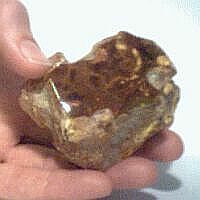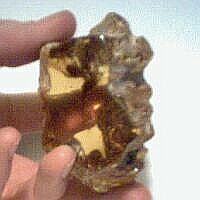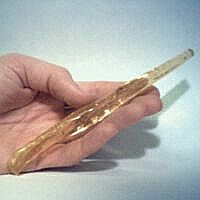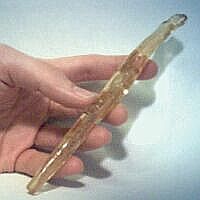My pieces of amber
Updated October 29 2003
I love amber.
Its color is beautiful. It's delicate and transparent. It looks very fragile, but it can be 50 millions of years old, much more resistant than us poor humans. I try to picture it. Some insect, a fly, a mosquito, a roach, a beetle, a spider, is hunting, flying, fighting its daily battle to survive in a very hostile environment in the heart of an ancient rain forest since long disappeared. It stops on a pine and feels safe there, it does not see the danger, the sticky resin flowing slowly, very close. Too late. It's trapped. It tries to escape it, but there is nothing to do. Entombed forever. Its grave is made of vegetal blood. The resin will harden with time and become amber. It will preserve perfectly the enveloppe of the small piece of life inside it, and shield it for millions of years. Frozen in time.
Amber is present throughout history of western civilizations, a bit like gold, because it was very rare, precious, and found only around the Baltic shores. It was actually sometimes called "The Gold of the North", and was heavily traded from Egypt to the Phenicians, Greeks (who called it "elektron", hence "electricity"), Celts, and during the medieval times too. Some people thought it had magical properties.
Nowadays you can buy small pieces of amber with insects inclusions, coming from everywhere from Russia to Dominican Republic. Even on eBay. Some of them are plain fakes, some of them are copal (which is genuine tree resin, but younger than real amber), but as long as you just deal with small and cheap specimens, you don't really care about it. I guess most of the nuggets I have are copal anyway.
Looking at a piece of amber is like looking straight at the history of Earth. Here are a few small pieces I have. They are not very impressive, but they fascinate me.






